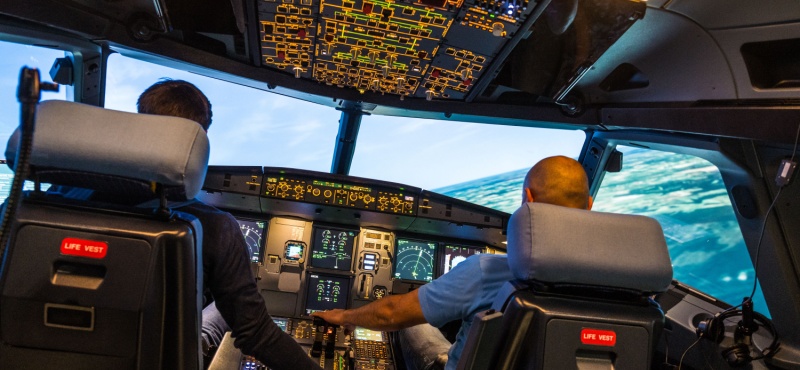In the dynamic world of aviation, staying at the forefront of technological advancements is paramount. Aspiring pilots today benefit from cutting-edge simulation technology that revolutionizes the training experience. In this blog, we’ll explore the role of simulation technology in pilot training and its evolution in the digital age. We’ll delve into the benefits of flight simulators for proficiency training, emergency procedures practice, and scenario-based learning in 2024. Additionally, we’ll highlight how Airlink Flight School, based in Waterville, Maine, incorporates state-of-the-art simulation facilities into its training programs to enhance the learning experience for aspiring pilots.
The Evolution of Simulation Technology
Simulation technology has come a long way since its inception, evolving from rudimentary flight training devices to sophisticated full-motion simulators that closely mimic real-world flying conditions. With advancements in computing power, graphics, and motion systems, modern flight simulators offer an immersive and realistic training environment for pilots.
Benefits of Flight Simulators
Flight simulators offer numerous benefits for pilot training, making them invaluable tools for aspiring aviators. Here are some key advantages:
- Proficiency Training: Simulators allow pilots to practice flying techniques and procedures in a safe and controlled environment, without the risks associated with actual flight. This enables pilots to hone their skills, build confidence, and maintain proficiency between actual flight sessions.
- Emergency Procedures Practice: Simulators are invaluable for practicing emergency procedures, such as engine failures, system malfunctions, and emergency landings. Pilots can simulate various scenarios and learn how to respond calmly and effectively in high-stress situations.
- Scenario-Based Learning: Simulators facilitate scenario-based learning, where pilots can experience a wide range of flight conditions and scenarios, including adverse weather, instrument failures, and air traffic control interactions. This hands-on approach enhances situational awareness and decision-making skills.
Airlink Flight School’s Approach to Simulation Training
At Airlink Flight School, we recognize the importance of simulation technology in pilot training and its role in preparing aspiring pilots for real-world challenges. Our state-of-the-art simulation facilities are integrated into our training programs, enhancing the learning experience for our students. Here’s how we incorporate simulation training at Airlink Flight School:
- Advanced Simulator Fleet: Airlink Flight School boasts a diverse fleet of advanced flight simulators, including fixed-base and full-motion simulators. These simulators accurately replicate the cockpit environments of various aircraft types, allowing our students to train on the latest technology.
- Customized Training Scenarios: Our instructors design customized training scenarios tailored to the specific needs and skill levels of our students. Whether it’s practicing instrument approaches, handling system failures, or conducting emergency procedures, our simulators offer a realistic and immersive training experience.
- Progressive Training Curriculum: Simulation training is seamlessly integrated into our progressive training curriculum, complementing classroom instruction and flight lessons. Our students progress from basic flight maneuvers to complex navigation exercises and emergency simulations, gradually building their skills and confidence.
- Hands-On Instruction: Our experienced instructors provide hands-on instruction and guidance during simulator sessions, offering valuable feedback and insights to help our students maximize their learning potential. We believe in a personalized approach to training, ensuring that each student receives the attention and support they need to succeed.
Conclusion: Elevating Pilot Training Through Simulation
Simulation technology has transformed the landscape of pilot training, offering aspiring pilots a safe, efficient, and realistic learning experience. At Airlink Flight School, we leverage state-of-the-art simulation facilities to enhance the training experience for our students, preparing them for the challenges of real-world flying. Whether it’s proficiency training, emergency procedures practice, or scenario-based learning, our simulation training programs are designed to equip aspiring pilots with the skills and confidence needed to excel in their aviation careers.
Are you ready to experience the future of pilot training? Contact Airlink Flight School today to learn more about our simulation training programs and start your journey to becoming a skilled and confident pilot.

